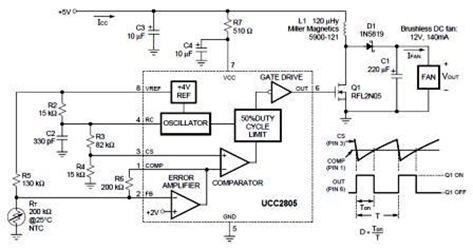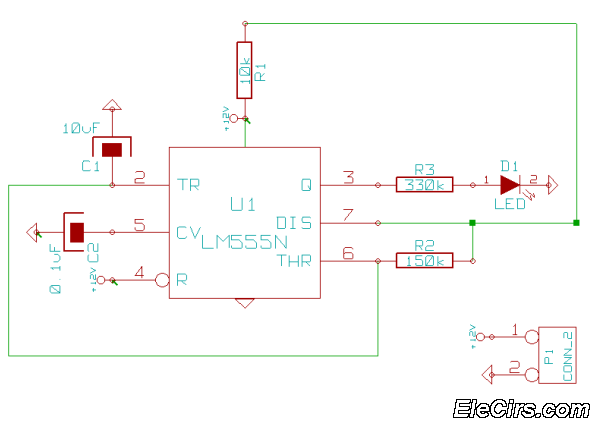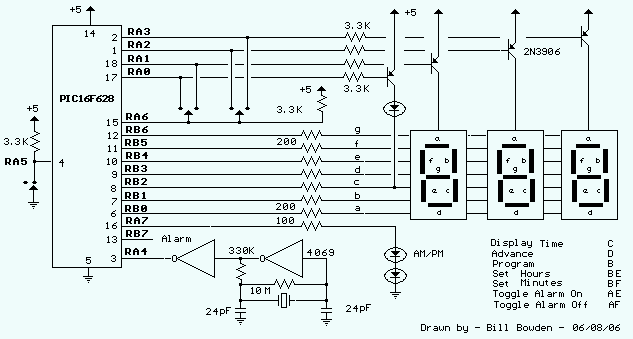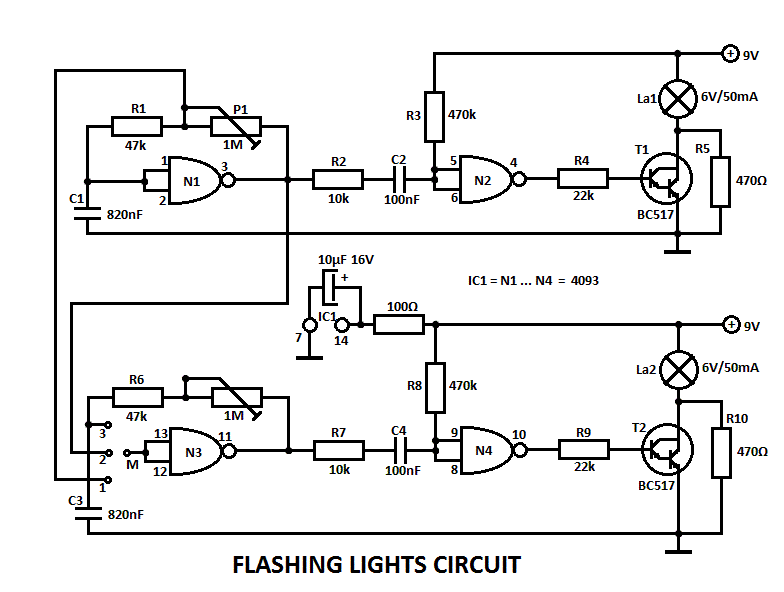
28 LED Clock Timer
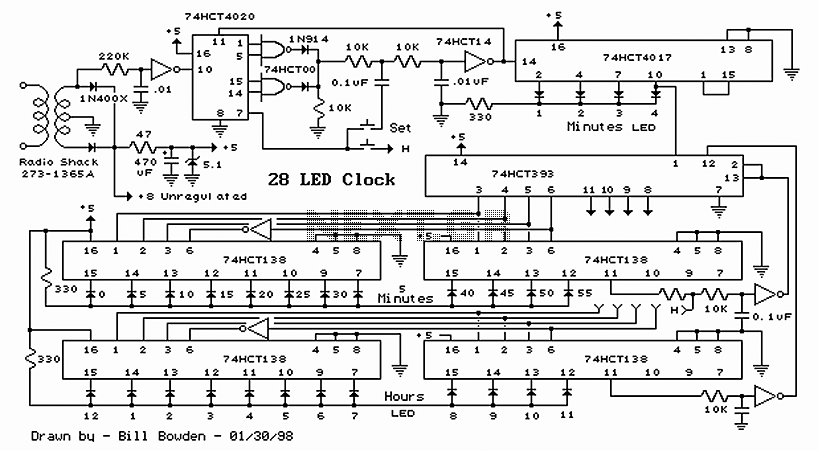
28 LED Clock Timer Circuit. This is a programmable clock timer circuit that uses individual LEDs to indicate hours and minutes. Twelve LEDs can be arranged in a circle to represent the 12 hours of a clock face, along with an additional 12 LEDs for minutes.
The 28 LED Clock Timer Circuit is designed to provide a visual representation of time through the use of individual light-emitting diodes (LEDs). The circuit employs a microcontroller that manages the timing functions and controls the illumination of the LEDs. The arrangement of 12 LEDs in a circular pattern represents the hours, while another set of 12 LEDs indicates the minutes, allowing for a clear and intuitive display of time.
To implement this circuit, a microcontroller such as an ATmega or PIC can be utilized for its programmable capabilities. The microcontroller is connected to a real-time clock (RTC) module, which keeps accurate time even when the main power is off. The RTC communicates with the microcontroller via I2C or SPI protocols, providing the current hour and minute information.
The LEDs should be connected to the microcontroller through current-limiting resistors to prevent damage due to excess current. Each LED representing an hour can be activated in sequence, while the minute LEDs can be activated in a similar manner, allowing for a visual countdown or timing function.
Power supply considerations are crucial for this circuit. A regulated power supply, typically 5V, is recommended to ensure stable operation of the microcontroller and LEDs. Additionally, capacitors may be added to the power lines to filter out noise and stabilize the voltage.
For user interaction, buttons can be integrated into the circuit to allow users to set the current time or switch between different timer modes. The circuit can also include a buzzer for audible alerts when the timer reaches a predetermined limit.
In summary, the 28 LED Clock Timer Circuit is a visually engaging timekeeping device that utilizes a microcontroller and a combination of LEDs to represent hours and minutes. Its design can be adapted for various applications, including timers, clocks, and educational tools for teaching time management.28 LED Clock Timer Circuit This is a programmable clock timer circuit that uses individual LEDs to indicate hours and minutes. 12 LEDs can be arranged in a circle to represent the 12 hours of a clock face and an additional 12 LE..
🔗 External reference
The 28 LED Clock Timer Circuit is designed to provide a visual representation of time through the use of individual light-emitting diodes (LEDs). The circuit employs a microcontroller that manages the timing functions and controls the illumination of the LEDs. The arrangement of 12 LEDs in a circular pattern represents the hours, while another set of 12 LEDs indicates the minutes, allowing for a clear and intuitive display of time.
To implement this circuit, a microcontroller such as an ATmega or PIC can be utilized for its programmable capabilities. The microcontroller is connected to a real-time clock (RTC) module, which keeps accurate time even when the main power is off. The RTC communicates with the microcontroller via I2C or SPI protocols, providing the current hour and minute information.
The LEDs should be connected to the microcontroller through current-limiting resistors to prevent damage due to excess current. Each LED representing an hour can be activated in sequence, while the minute LEDs can be activated in a similar manner, allowing for a visual countdown or timing function.
Power supply considerations are crucial for this circuit. A regulated power supply, typically 5V, is recommended to ensure stable operation of the microcontroller and LEDs. Additionally, capacitors may be added to the power lines to filter out noise and stabilize the voltage.
For user interaction, buttons can be integrated into the circuit to allow users to set the current time or switch between different timer modes. The circuit can also include a buzzer for audible alerts when the timer reaches a predetermined limit.
In summary, the 28 LED Clock Timer Circuit is a visually engaging timekeeping device that utilizes a microcontroller and a combination of LEDs to represent hours and minutes. Its design can be adapted for various applications, including timers, clocks, and educational tools for teaching time management.28 LED Clock Timer Circuit This is a programmable clock timer circuit that uses individual LEDs to indicate hours and minutes. 12 LEDs can be arranged in a circle to represent the 12 hours of a clock face and an additional 12 LE..
🔗 External reference
Warning: include(partials/cookie-banner.php): Failed to open stream: Permission denied in /var/www/html/nextgr/view-circuit.php on line 713
Warning: include(): Failed opening 'partials/cookie-banner.php' for inclusion (include_path='.:/usr/share/php') in /var/www/html/nextgr/view-circuit.php on line 713

